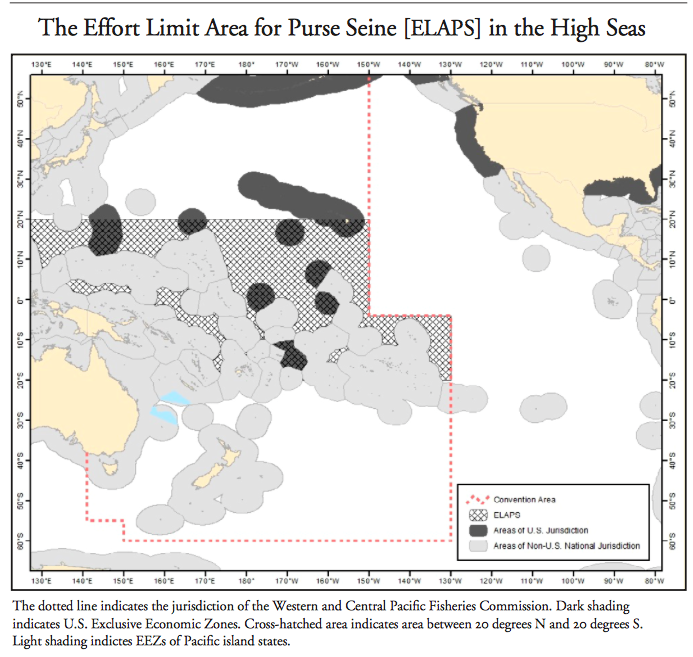The National Marine Fisheries Service is on track to ratify a new South Pacific Tuna Treaty with 16 Pacific island nations that have historically allowed the U.S. purse seine fleet to fish in their waters for a set amount of days at a set cost. Last December, with vessel owners unwilling to pay anymore for that access, which had become rather costly, the United States announced that it planned to withdraw from the treaty. Since then, however, the agency has renegotiated the treaty’s terms and as of last month was poised to approve final language.
Under the revised treaty, U.S. vessels will have to pay more than $10,000 a day for access to those foreign waters. In total, they will have to pay out $70 million, Mike Tosatto, director of NMFS’s Pacific Islands Regional Office, said at last month’s meeting of the Western Pacific Fishery Management Council (Wespac). The United States will provide $23 million in economic assistance to those countries under a separate agreement.
For the treaty to be finalized, the Senate must approve it and NMFS must develop and publish implementing regulations. Once the treaty is approved, it will remain in effect for ten years, although the number of fishing days and their cost will be negotiated annually or bi-annually, he said.
“All of those pieces take time,” Tosatto said, adding that his agency will enter into a memorandum of agreement with the treaty parties to allow the U.S. fleet to operate in their waters in the meantime.
Getting access to the fishing waters around those countries is crucial for the U.S. purse seine fleet — not to mention the American Samoa tuna canneries — since the fleet has been consistently hitting its Western and Central Pacific Fisheries Commission (WCPFC) quota for fishing days in the high seas area between 20 degrees north and 20 degrees south, known as the ELAPS, for Effort Limited Area for Purse Seine.
In May, NMFS published a rule giving the purse seine fleet 558 more days to fish on top of its high seas quota of 1,270 days by transferring the quota WPCFC set for fishing in the waters controlled by U.S. Pacific island territories. Still, those extra days weren’t enough to keep the fleet operating through the end of the year and NMFS announced on August 26 that the high seas would be closed to purse seiners on September 2.
The lack of access to the high seas and to waters controlled by the parties to the tuna treaty has devastated American Samoa’s tuna canneries, which employ some 850 people. Last month, Tri Marine, owner of one of the canneries, announced it was going to suspend operations on December 11. And Starkist, which owns the other, has had to halt operations repeatedly this year due to a lack of supply.
“The tuna canning industry is highly dependent on the U.S. purse seine fleet. Access to the ELAPS is of vital importance,” new Wespac member Archie Taotasi Soliai said. Sollai also works for Starkist.
It’s uncertain whether or not NMFS will be able to continue or expand the territorial quota transfers to the fleet. Tosatto said that the purse seine quota transfer measure, which was modeled on a measure used by the Hawai`i longline fleet to get around its WCPFC quota, is new and unusual to the WCPFC.
“It might not be well-received. It might be challenged. We have to make sure the I’s are dotted and T’s are crossed” so the measure stands up in the court of public opinion, the court of WCPFC compliance, and, literally, the courts, he said.
Shortly after the purse seine quota transfer measure was published, it was criticized by the chief executive of the Parties to the Nauru Agreement, which represents most of tuna treaty parties. Transform Aqorau said the measure was a superpower abusing the terms of WCPFC’s tropical tuna conservation measure.



Leave a Reply